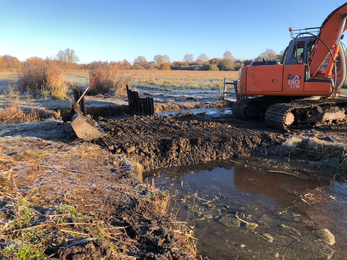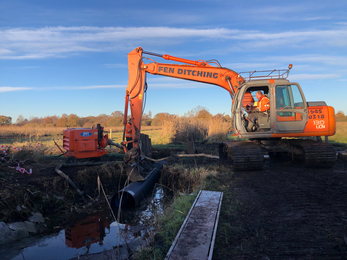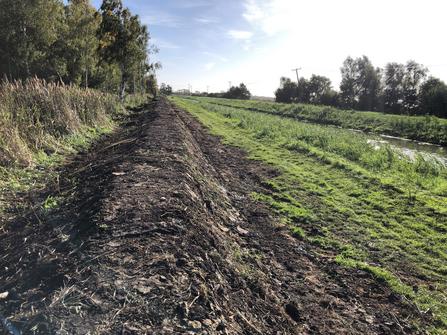If you have been to Woodwalton Fen recently you may have seen a couple of new culverts on site. These culverts have replaced two rather old bridges that were beginning to become unsafe for vehicles. Culverts have the benefit of being a bit lower maintenance than bridges but come at a slight cost as they reduce the flow of water around site. In the locations that we have installed culverts, we were able to do so because flow of water in the ditches concerned is not too critical to the positive management of the site as a whole.
Whilst installing the culverts may have slightly reduced the flow in a couple of ditches, in the past few months we have also had a water control structure replaced in the middle of the National Nature Reserve (NNR) to aid us in moving water around the site. The old control was non-functioning; it had completely seized up and the ditch either side of it had largely silted up. The new structure should allow us to better control movement of water into the south of the site’s central hydrological unit and thus help us to maintain the water levels to best meet our conservation objectives.



